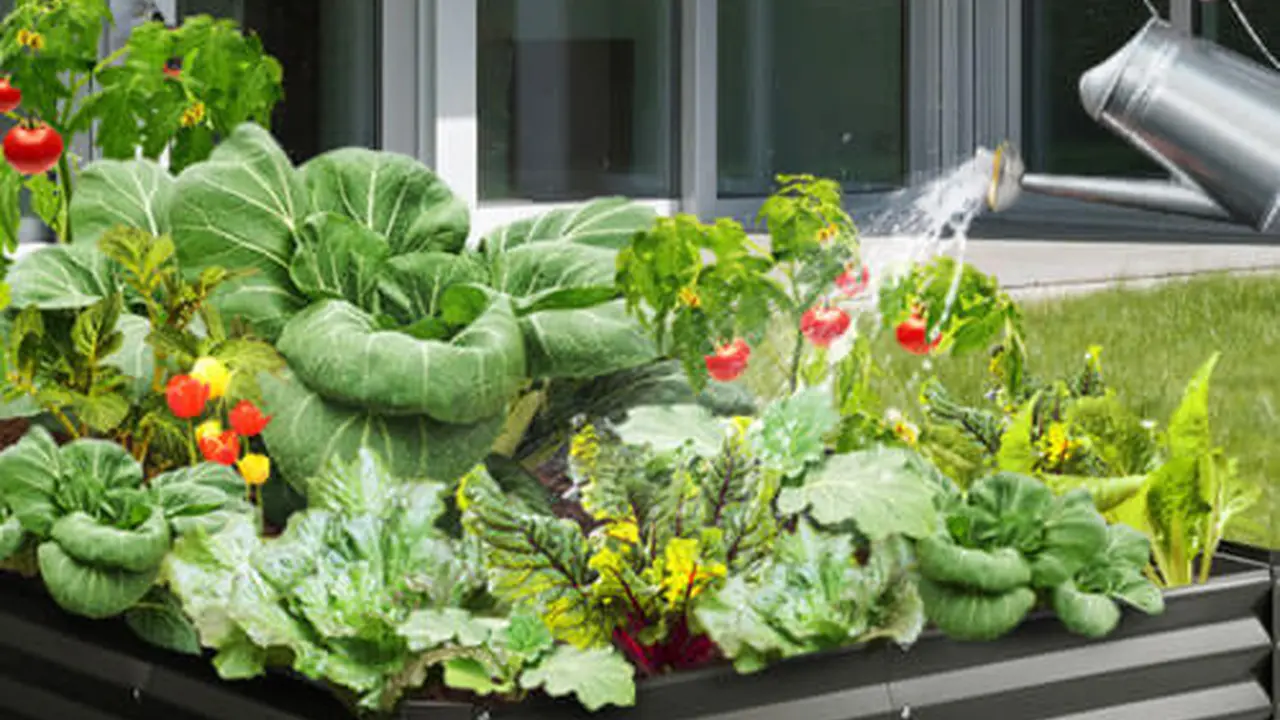3 DIY Projects for Upcycling Old Furniture
Discover 3 easy DIY projects for upcycling old furniture. Give new life to forgotten pieces and reduce waste.

3 DIY Projects for Upcycling Old Furniture
Hey there, fellow DIY enthusiasts and eco-conscious homeowners! Ever look at that old dresser gathering dust in the garage or that worn-out coffee table and think, 'There's got to be a better way than just tossing it?' You're in luck! Upcycling old furniture isn't just a fantastic way to reduce waste and save money; it's also an incredible opportunity to inject unique personality and charm into your home. Instead of buying new, let's transform what you already have into something truly special. We're talking about giving forgotten pieces a new lease on life, making them functional, stylish, and perfectly suited to your space. Ready to roll up your sleeves? Let's dive into three super fun and rewarding DIY upcycling projects that are perfect for beginners and seasoned crafters alike.
Project 1 Transform an Old Dresser into a Chic Bathroom Vanity
Got an old wooden dresser that's seen better days? Don't send it to the landfill! With a little elbow grease and some clever modifications, you can turn it into a stunning and functional bathroom vanity. This project is a fantastic way to add character to your bathroom, often at a fraction of the cost of a new vanity. Plus, you get custom storage that perfectly fits your needs.
Choosing the Right Dresser for Your Bathroom Vanity Conversion
First things first, selecting the right dresser is crucial. Look for one made of solid wood – pine, oak, or maple are excellent choices. Particle board or MDF might not hold up well to the moisture in a bathroom. Measure your bathroom space carefully, paying attention to the width, depth, and height. You'll need enough room for the dresser, plumbing, and comfortable access. Consider the number of drawers and their configuration; you'll want some functional storage after the sink is installed.
Essential Tools and Materials for Your DIY Vanity Project
Here's what you'll need to get started:
- Old wooden dresser
- Bathroom sink (drop-in or vessel)
- Faucet
- P-trap and drain assembly
- Jigsaw or hole saw
- Drill
- Screwdriver
- Sandpaper (various grits)
- Primer (oil-based or shellac-based for best adhesion)
- Paint (water-resistant, semi-gloss or satin finish) or wood stain/sealant
- Paintbrushes or rollers
- Wood filler
- Caulk (silicone, mildew-resistant)
- Optional: New hardware (knobs, pulls)
Step by Step Guide to Converting Your Dresser into a Vanity
- Prepare the Dresser: Remove all drawers and hardware. Clean the dresser thoroughly. If there's old paint or varnish, sand it down to create a smooth surface for new paint or stain. Fill any holes or imperfections with wood filler and sand smooth once dry.
- Measure and Cut for the Sink: Place your sink upside down on the dresser top where you want it to be. Trace its outline. For a drop-in sink, you'll cut along the inner line of the template provided with the sink. For a vessel sink, you'll only need to cut a hole for the drain. Use a jigsaw or hole saw for precise cuts.
- Modify Drawers for Plumbing: This is where it gets a bit tricky. You'll need to create space for the sink's bowl and plumbing. For the top drawer(s), you'll likely need to cut out the back and possibly part of the sides to accommodate the sink. For lower drawers, you might need to cut notches for the P-trap and water lines. Test fit everything as you go.
- Prime and Paint/Stain: Apply a good quality primer, especially if you're painting over a dark finish or bare wood. Once dry, apply several thin coats of your chosen paint or stain. Lightly sand between coats for a super smooth finish. A water-resistant paint is crucial for a bathroom environment.
- Install Sink and Faucet: Follow the manufacturer's instructions to install the sink and faucet. Use silicone caulk around the sink's edge to create a watertight seal.
- Connect Plumbing: This might be the trickiest part if you're not experienced. Connect the P-trap and drain assembly to the sink, and then connect the water supply lines to the faucet. If you're unsure, it's always best to call a professional plumber for this step to avoid leaks.
- Reassemble and Finish: Reinstall the modified drawers and any new hardware. Wipe down the entire vanity.
Product Recommendations for Your Vanity Project
- Paints: For durability and moisture resistance, consider Sherwin-Williams Emerald Urethane Trim Enamel (around $80/gallon) or Benjamin Moore Advance Interior Paint (around $75/gallon). Both offer excellent adhesion and a hard, furniture-like finish. For a more budget-friendly option, Rust-Oleum Cabinet Transformations Kit (around $70) can also work wonders.
- Sinks: For a classic drop-in, the Kohler Caxton Undermount Bathroom Sink (around $100-$200) is a popular choice. For a stylish vessel sink, check out the VIGO Glass Vessel Bathroom Sink (around $150-$300) for a modern touch.
- Faucets: The Delta Faucet Lahara Single-Handle Bathroom Faucet (around $100-$150) offers good quality and design. For a more premium feel, the Moen Brantford Single-Handle Bathroom Faucet (around $150-$250) is a solid choice.
Usage Scenarios and Comparisons
This upcycled vanity is perfect for a guest bathroom, a powder room, or even a smaller master bathroom where you want a unique focal point. Compared to buying a new vanity, you're getting a custom piece with potentially higher quality wood for less money. New vanities can range from $200 for basic MDF models to over $1000 for solid wood. Your DIY version, even with new sink and faucet, could cost you $200-$500, depending on your dresser and chosen fixtures. The main trade-off is the time and effort involved, and the need for some basic plumbing knowledge or the cost of a plumber.
Project 2 Repurpose an Old Door into a Unique Headboard
An old, solid wood door, especially one with interesting panels or architectural details, can be transformed into a stunning and one-of-a-kind headboard. This project adds a rustic, vintage, or even modern farmhouse vibe to your bedroom, depending on your finishing choices. It's a fantastic way to make a statement without breaking the bank.
Selecting the Perfect Door for Your Headboard
Look for solid wood doors – hollow core doors won't have the same visual impact or durability. Architectural salvage yards, flea markets, or even your own attic might yield a gem. Consider the size of your bed (twin, full, queen, king) and choose a door that's appropriately sized. A standard interior door is usually 80 inches tall and 24-36 inches wide. You might need two doors for a king-sized bed, or you can cut a wider door down to size. Look for interesting paneling, glass inserts (which you'll need to remove and replace with wood or decorative panels), or unique hardware.
Tools and Materials for Your DIY Headboard
- Old wooden door
- Sandpaper (various grits)
- Primer
- Paint or wood stain/sealant
- Paintbrushes or rollers
- Wood filler
- Optional: Decorative trim, fabric, batting, upholstery tacks (for an upholstered look)
- Mounting hardware (French cleat, heavy-duty D-rings, or direct bolt-to-bed frame kit)
- Drill
- Screwdriver
- Measuring tape
Step by Step Guide to Creating Your Door Headboard
- Prepare the Door: Remove any old hardware (hinges, doorknobs). Clean the door thoroughly. Sand down any rough spots, old paint, or varnish. Fill any holes with wood filler and sand smooth. If the door is too tall, you might need to cut it down to your desired height (typically 48-60 inches from the floor).
- Design Your Finish: Decide if you want to paint, stain, or even upholster your headboard.
- Paint/Stain Option: Apply a good primer, then several thin coats of your chosen paint or stain. For a distressed look, you can sand certain areas after painting to reveal the wood underneath. Seal with a clear coat for protection.
- Upholstery Option: If you want an upholstered headboard, cut batting and fabric to size, leaving extra for wrapping around the edges. Attach the batting to the door using spray adhesive or staples. Then, carefully wrap and staple the fabric tightly around the door, ensuring smooth corners. You can add decorative upholstery tacks for a more finished look.
- Mounting the Headboard: This is crucial for safety. You have a few options:
- French Cleat: This is a very secure method. It involves two interlocking pieces of wood, one attached to the wall and one to the headboard.
- Heavy-Duty D-Rings: Attach D-rings to the back of the headboard and hang it on sturdy picture hooks or screws anchored into wall studs.
- Bolt to Bed Frame: You can purchase universal headboard brackets that allow you to bolt the door directly to your existing bed frame. This requires drilling holes in the door and potentially the bed frame.
- Install: Carefully mount your new headboard to the wall or bed frame, ensuring it's level and secure.
Product Recommendations for Your Headboard Project
- Paints: For a durable finish, Behr Premium Plus Interior Paint & Primer (around $35/gallon) or Valspar Signature Interior Paint & Primer (around $40/gallon) are good choices. For a chalk paint finish, Annie Sloan Chalk Paint (around $40/quart) is popular for its distressed look.
- Stains: Minwax Wood Finish Penetrating Stain (around $15/quart) comes in many colors. Follow up with Minwax Polycrylic Protective Finish (around $20/quart) for durability.
- Mounting Hardware: A Hangman Products French Cleat Picture Hanger (around $15-$30, depending on size) is highly recommended for heavy items. Alternatively, a Universal Headboard Bracket Kit (around $20-$40) can connect to most bed frames.
Usage Scenarios and Comparisons
A door headboard is perfect for bedrooms seeking a unique, personalized touch. It works wonderfully in farmhouse, rustic, industrial, or eclectic decor styles. Compared to buying a new headboard, which can range from $100 for basic models to $500+ for solid wood or upholstered options, your DIY door headboard can cost as little as the price of the door (often free or very cheap) plus paint/stain and mounting hardware, potentially under $100. The main advantage is the unique character and the satisfaction of creating something yourself. The challenge lies in finding the right door and ensuring secure mounting.
Project 3 Convert an Old Ladder into a Stylish Bookshelf or Display Shelf
An old wooden ladder, especially a rustic A-frame or step ladder, can be transformed into a charming and functional bookshelf, display shelf, or even a unique plant stand. This project is relatively simple and adds a touch of bohemian, rustic, or industrial chic to any room. It's a fantastic way to add vertical storage and visual interest.
Choosing the Right Ladder for Your Shelf Project
Look for sturdy wooden ladders. Old wooden step ladders or even extension ladders can work. Ensure the ladder is stable and free from major cracks or rot. The number of rungs and the width of the ladder will determine the size and number of shelves you can create. A-frame ladders are particularly good for this as they naturally provide a stable base and angled sides for shelves.
Tools and Materials for Your DIY Ladder Shelf
- Old wooden ladder
- Wood planks for shelves (reclaimed wood, plywood, or new lumber)
- Sandpaper (various grits)
- Primer (if painting)
- Paint or wood stain/sealant
- Paintbrushes or rollers
- Wood screws
- Drill
- Measuring tape
- Saw (circular saw, miter saw, or hand saw)
- Optional: Wood glue, L-brackets for extra shelf support
Step by Step Guide to Building Your Ladder Shelf
- Prepare the Ladder: Clean the ladder thoroughly. Sand down any rough edges, splinters, or old paint/varnish. If you want a distressed look, you can skip heavy sanding. If painting, prime the ladder.
- Paint/Stain the Ladder: Apply your chosen paint or stain to the ladder. For a rustic look, a simple clear sealant or a light stain might be enough. For a more modern look, a bold color or a crisp white paint can work wonders.
- Measure and Cut Shelves: Determine where you want your shelves to sit on the ladder rungs. Measure the distance between the rungs and the depth you want for each shelf. Cut your wood planks to these dimensions. Remember that the shelves will likely be wider at the bottom and narrower at the top if you're using an A-frame ladder.
- Finish the Shelves: Sand the shelf planks smooth. You can paint, stain, or simply seal them to match or contrast with the ladder.
- Attach the Shelves: Place each shelf on the ladder rungs. Secure them from underneath by drilling pilot holes and then screwing them into the rungs. For extra stability, especially for heavier items, you can use L-brackets to attach the shelves to the ladder's uprights. Ensure all shelves are level.
- Stabilize (if necessary): If your ladder feels wobbly, you might need to add cross-bracing at the back or secure it to a wall using L-brackets for safety, especially if you have children or pets.
Product Recommendations for Your Ladder Shelf Project
- Wood for Shelves: Reclaimed barn wood (price varies greatly, often free or cheap from salvage yards) offers great character. For new wood, common pine boards (around $10-$20 per 8-foot board, depending on width) are affordable and easy to work with. Plywood (around $30-$50 per sheet) can also be cut to size.
- Stains/Sealants: Varathane Wood Stain (around $15/quart) offers a wide range of colors. For a clear protective finish, Minwax Fast-Drying Polyurethane (around $20/quart) is excellent.
- Screws: Spax Multi-Material Screws (around $10-$20 per box) are versatile and provide strong hold without pre-drilling in many woods.
Usage Scenarios and Comparisons
A ladder shelf is incredibly versatile. It's perfect for displaying books, plants, decorative items, or even towels in a bathroom. It works well in living rooms, bedrooms, home offices, or even kitchens for open shelving. Compared to buying a new bookshelf, which can range from $50 for basic particle board to $300+ for solid wood, your DIY ladder shelf can be made for the cost of the ladder (again, potentially free or cheap) plus the wood for shelves and finishing supplies, likely under $100. The unique aesthetic and the story behind the piece are invaluable. The main consideration is ensuring the ladder is stable and securely holds the shelves and their contents.
So there you have it! Three fantastic ways to breathe new life into old furniture. Upcycling isn't just about saving money; it's about creativity, sustainability, and making your home truly yours. Each project offers a chance to learn new skills, express your style, and create a conversation piece that you'll be proud to show off. Happy crafting!
:max_bytes(150000):strip_icc()/277019-baked-pork-chops-with-cream-of-mushroom-soup-DDMFS-beauty-4x3-BG-7505-5762b731cf30447d9cbbbbbf387beafa.jpg)






